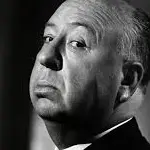Compared to its predecessor, Don't Breathe 2 brings less of the horror and more of the heart. Clearly, this is a tale about fatherly love and redemption.
In the world of cinema, classic horror films typically fall into one of three categories: suspenseful plot twists, intense sensory experiences, and innovative concepts.
Back in 2016, a low-budget R-rated thriller took the world by storm with its unconventional storyline, capturing Hollywood's attention. There were no ghosts or supernatural beings, yet it terrified countless viewers. It recouped its budget on the first day of release, with the producers boasting about its profitability. Some even called it the "best horror film in 20 years."

The sequel is set in Detroit, like the first film, but it doesn’t pick up where the original left off. This time, Norman becomes the central character, and the story revolves around his grief over his lost daughter. The rest of the plot diverges significantly from the original. A few years later, Norman is living with a girl named Phoenix. Curiously, no one knows where Phoenix, who calls Norman "Dad," came from, not even Phoenix herself. Norman restricts her from going out, and if she wants to leave, she must pass an "escape test." However, when Phoenix ventures out with a deliveryman, they encounter organ traffickers. Thankfully, a fierce dog protects them, but the gang isn’t easily deterred and follows them back. Despite Norman’s strong defense, taking down two intruders, he ultimately loses. His beloved dog is killed, his house burns down, and Phoenix is kidnapped. Amid the chaos, Phoenix's mysterious past comes to light.
The high standards set by the original undoubtedly placed pressure on the sequel, which falls short of audience expectations. The first film's tight pacing and oppressive atmosphere kept viewers on edge, but the second installment loses this intensity. It's as if A Quiet Place sequel was turned into a John Wick movie, with more action and less suspense. The original’s tension is gone, replaced by action sequences that some viewers felt were better suited for a film titled First Blood 6: The Old Soldier’s Rage. In Don't Breathe 2, Norman's heightened senses and formidable skills are reminiscent of characters like Jigsaw from Saw or John Wick. The character becomes overly symbolic, reinforcing the image of an "angry old man on a killing spree," but the film loses its cohesiveness.

In the original, viewers could set aside moral judgments and focus on the thrills. In the sequel, the character's motivations are clearer, making the story feel more mundane. As a blood-pumping thriller, the brutal fight scenes are impressive. For example, Norman pretends to be unconscious in a pool of water, then senses ripples with his fingers and takes out the approaching assailant with pinpoint accuracy.
Don't Breathe had a tight rhythm and a suffocating atmosphere that kept the audience holding their breath until the very end. The second film, however, shifts towards more action. The fight scenes, whether one-on-one or one-against-many, are realistic and straightforward, much like the John Wick series.
The film could have maintained a tense atmosphere, showcasing the veteran’s masterful combat skills, but the director chose to transition from horror to action. This shift might have been intended to differentiate the sequel from the original or to align with market trends. Compared to the first film, there is less horror and more warmth. Ultimately, Don't Breathe 2 centers on a story of fatherly love and redemption.












































Share your thoughts!
Be the first to start the conversation.